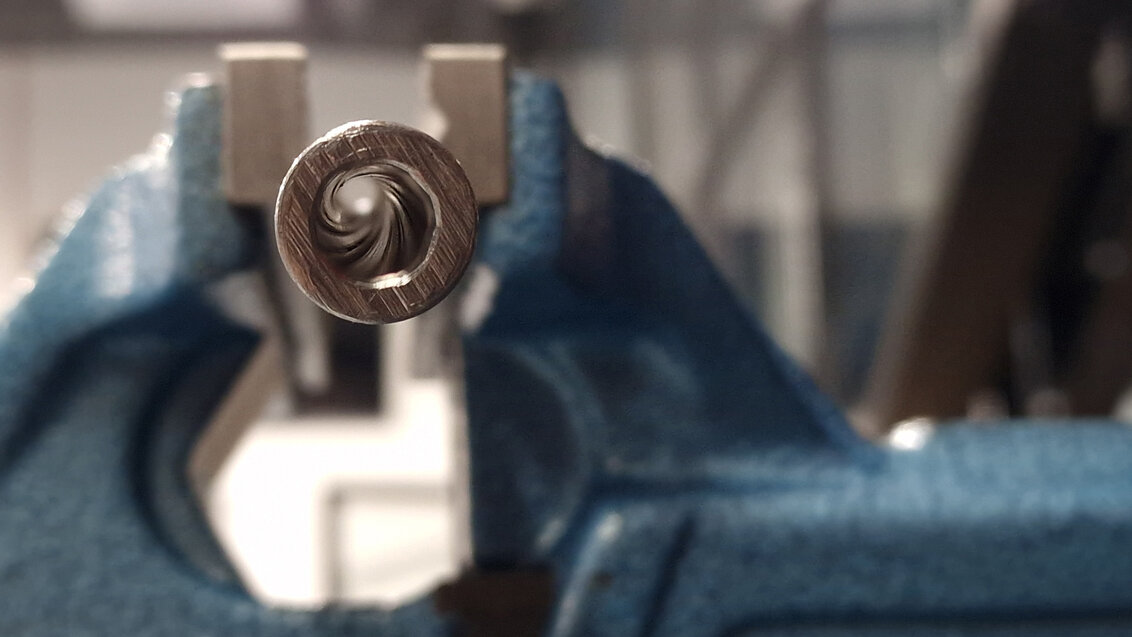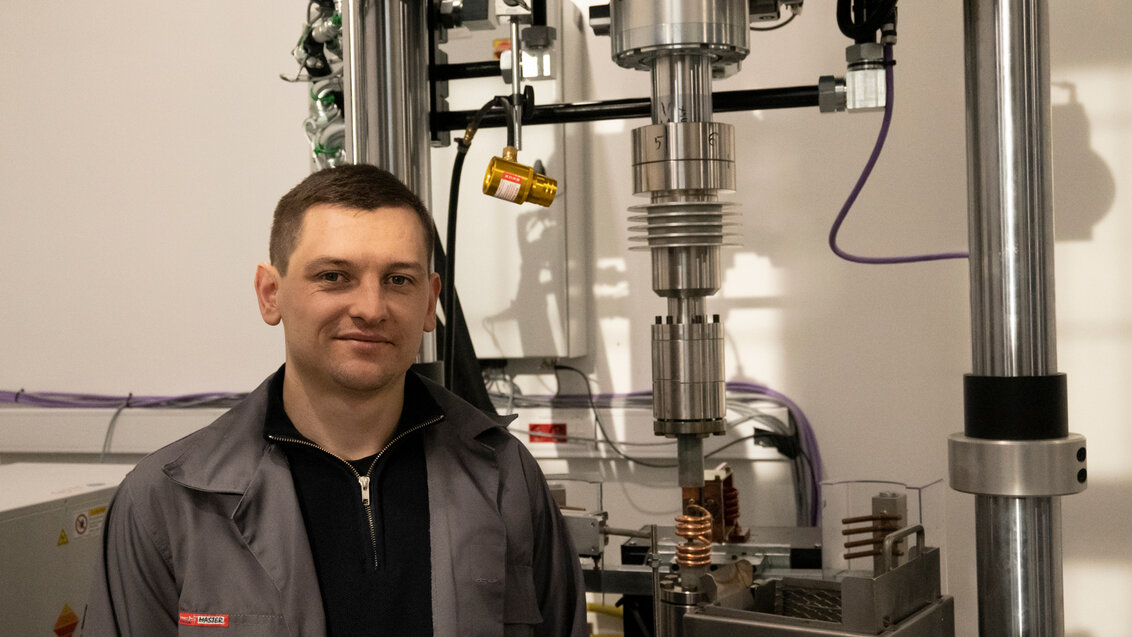
Internally finned tube. Photo: AGH UST
Although they look like finned gun barrels, they are not good for shooting. Tubes with internal helical fins can efficiently transfer heat to the environment; however, their production consumes a lot of energy and money. An AGH UST scientist has an idea that can reduce the production costs of such systems, and most of all, improve their heat transfer parameters. Can the experience gained during the creation of heat exchangers be helpful in cooling down gun barrels?
Many processes in the pyrotechnics, chemical, and energy industries generate high temperatures. Overheating devices can lead to severe damage, and therefore, to operate fault-free, they need an effective way of heat transfer. The heat flow occurs in the direction from the higher to the lower temperature, which is a feature exploited by cooling systems. Take electric transformers that are submerged in oil vats. The heat generated by the transformer is transferred to the oil and then, through convection and conduction, to the environment. In more advanced systems, the circulation of oil is triggered by a pump that causes it to flow through a heat exchanger. Such devices are usually made up of a bundle of parallelly placed tubes covered with a cilindrical shell. Heat exchange occurs through the walls of the tubes with another fluid or gas that flows inside the shell.
Methods to intensify heat exchange
‘The greater the temperature difference between the media, the more intense the heat exchange. In addition to the conduction of heat through the wall of the tube, we can distinguish two critical states in the entire system, namely the transfer of heat from the fluid inside the tube to its internal wall and from its external wall to the environment. We can claim that the heat exchange process is as effective as its weakest link’, says Dr Eng. Remigiusz Błoniarz from the Faculty of Metals Engineering and Industrial Computer Science.
The researcher adds that there are several ways to intensify the heat exchange process. For example, we can modify the temperature difference between the medium cooled down inside the tube and its surroundings, releasing heat energy by compressing the former and increasing the flow speed of the gas or fluid outside. Other methods include coating the outer walls of the tube with a layer of a highly conductive material, as well as increasing the surface of heat exchange by means of introducing fins to the outer and inner sides of the tube. The latter also puts the cooling medium into a whirling motion, increasing the surface area of contact between the fluid and the tube wall by pushing the vapour bubbles inside as a result of the centrifugal force. Previous studies have shown that choosing the appropriate helix angle for the fins can manifoldly increase the amount of exchanged heat.
Innovative systems designed at the AGH UST
Dr Błoniarz continues his work that aims to optimise the production methods of internally finned tubes and, most of all, to improve their heat exchange parameters using unorthodox material solutions. As the AGH UST scientist explains, these types of tube are produced on an industrial scale using extrusion, which is energy-consuming and expensive. Another production flaw of this solution lies in the need to use a material with good plastic properties which does not concur with its strength, for example, aluminium.
Dr Eng. Remigiusz Błoniarz, Photo: AGH UST

 14th Krakow Integration Days
14th Krakow Integration Days  Professor Wojciech Górecki – AGH UST Honorary Professor
Professor Wojciech Górecki – AGH UST Honorary Professor  Thermal treatment of municipal and biomass wastes. Research of AGH UST scientists
Thermal treatment of municipal and biomass wastes. Research of AGH UST scientists  Professor Janusz Mroczka – AGH UST Doctor Honoris Causa
Professor Janusz Mroczka – AGH UST Doctor Honoris Causa